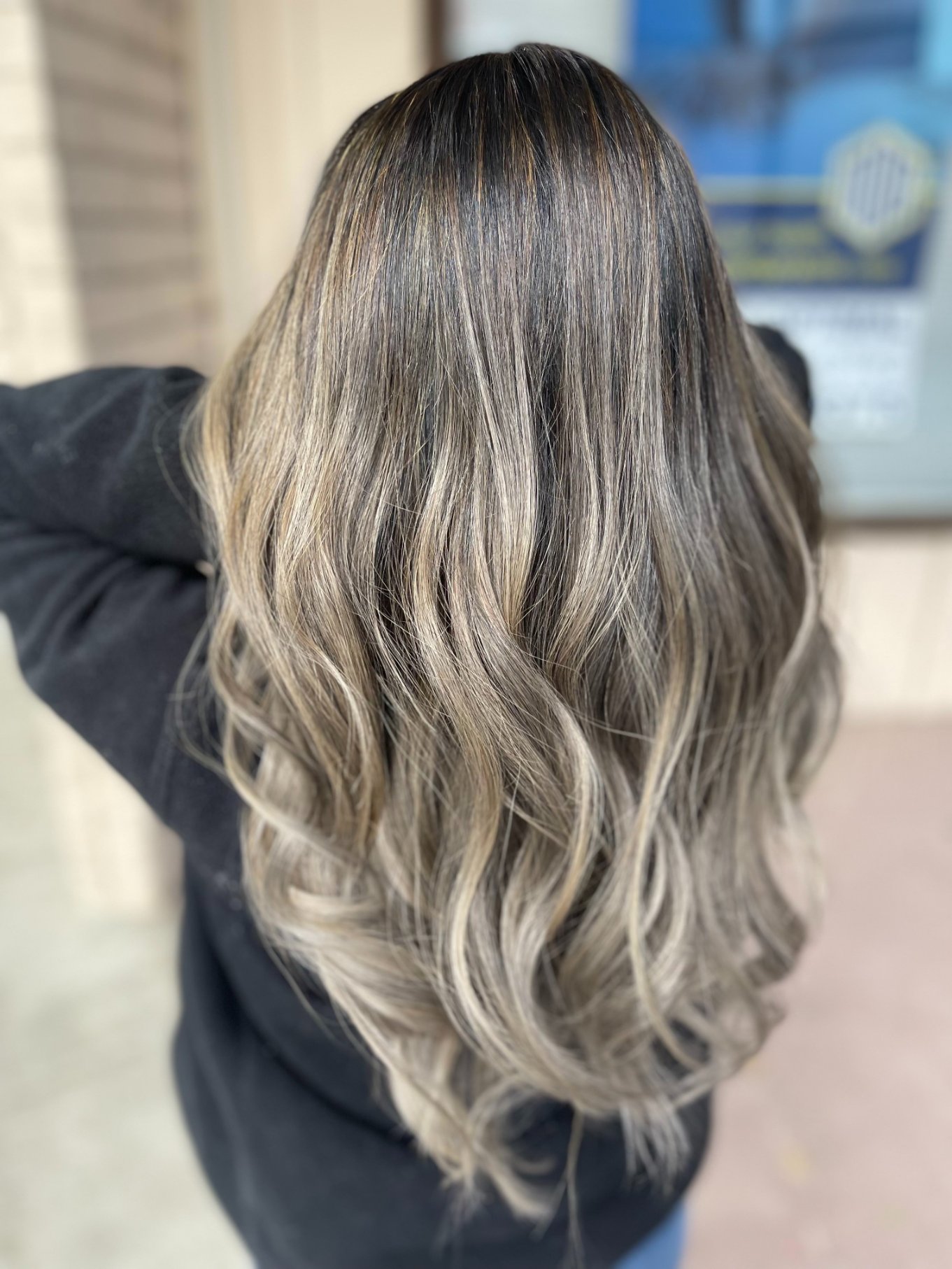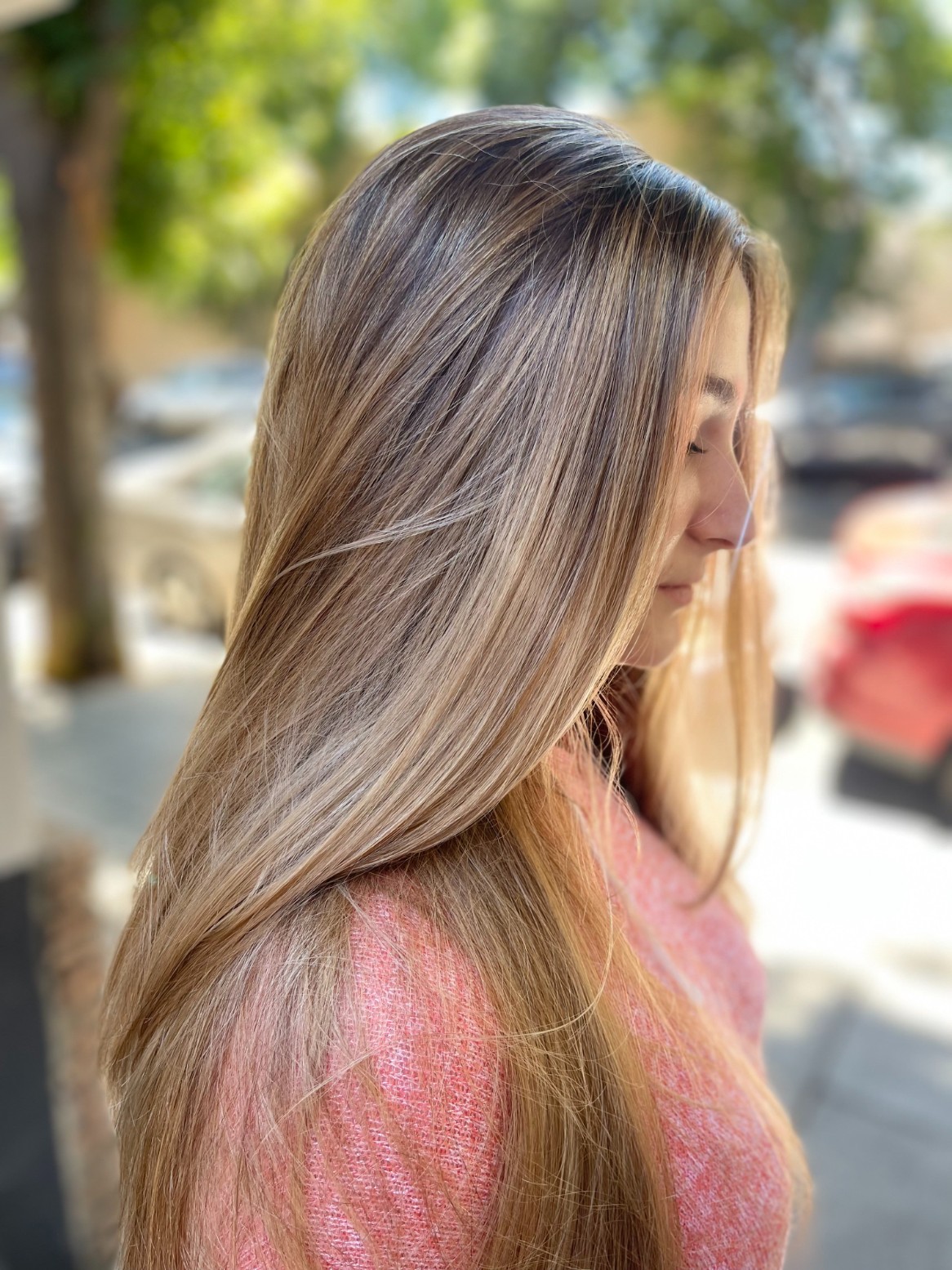
It is reported that balayage originated from Paris back in the 1970s. It is still one of the most popular hairstyles available.

The balayage technique involves painting freehand on the hair using a brush that has been dipped in a lightener. When a sweeping motion is used for balayage, it creates a soft, natural, and multidimensional-looking highlight.

In most cases, you’ll find the colorists using brushes to paint the vertical highlights on the hair. During this process, cotton strips or plastic wrap are layered on each section of the hair. This safeguards the application and prevents any spotting or color bleeding that could ruin the desired outcome.
Foils are unnecessary with a balayage, and only freehand painting is needed. Also, when styling your hair, the colorist decides which sections of your hair will have lightener applied to them and which sections won’t.
However, it’s important to note that the lightener is mainly used on the face-framing sections of your hair, the top sections, and at times, the ends of the hair.
You might notice that your colorist leaves out some sections of your hair and doesn’t dye them completely. This gives you that dimensional look you’ve spotted with some celebrities.
After the colorist has applied gloss or toner on your hair, it’s time for your blow-dry and trimming. Trimming is supposed to happen when your hair is dry. It should also be done before a lightener is used on it in order to avoid wastage.
The main intention of a balayage is to look as natural as possible. This means that the hairstyle is relatively low maintenance and doesn’t require very regular visits to the salon. However, how frequently you visit the salon might depend on how intense your balayage looks.

It is advised that 8-12 weeks is enough. Also, it’s best to get toner in between services to ensure that the color stays fresh and that you get rid of any unwanted tones.
Traditional highlights usually involve a foil being applied at the root of the hair. For balayage, the color is applied on select sections of your hair rather than all over. This makes the balayage regrowth very soft and unnoticeable, hence the low maintenance.
If you’re looking for an attractive and yet low-maintenance hairstyle, balayage is a great choice. With balayage, you have the freedom to pick how intense you'd like the color to be. Plus, you won’t have to worry about damaging your hair.
Still not sure if balayage is right for you? Before you decide to get a balayage hair color treatment, it’s important you consult with your colorist first. Our professional stylists and colorists can guide you on what type of highlighting or coloring would work best for your hair, and how to achieve the look you want.
Contact Essence Salon today to book your appointment for balayage services or to ask any other questions you may have.